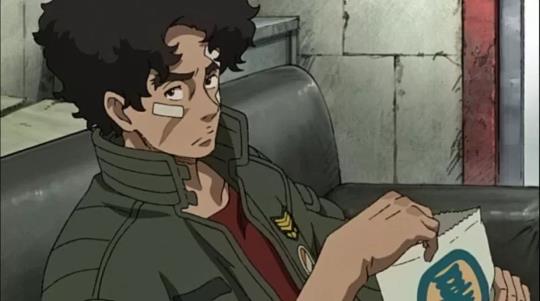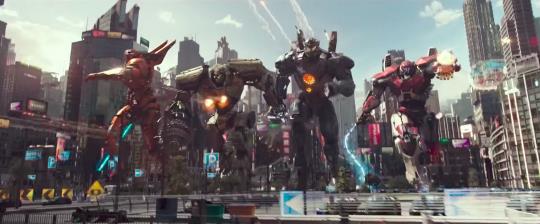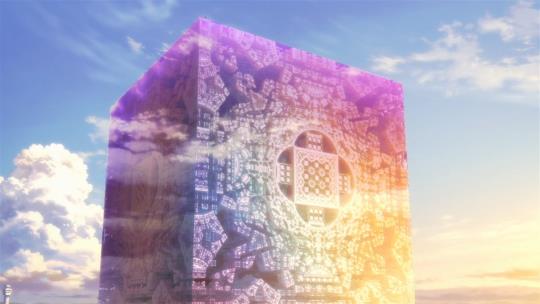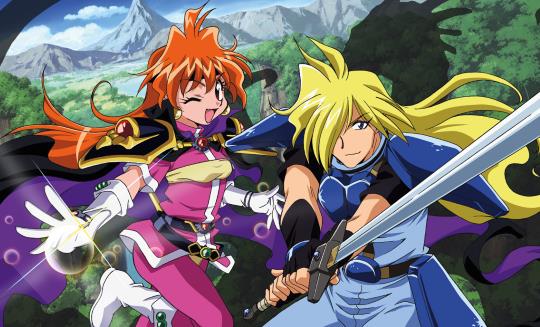Silver Screenings Archive

Silver Screenings is a collection of thoughts regarding film, television, or anime. Typically I'll discuss narrative themes, though I'll also dabble in discussing more technical concepts such as direction and cinematography.
Following a second viewing, I've decided Little Witch Academia is something anyone can enjoy regardless of whether you like anime or not.

I don’t know if Little Witch Academia is the best anime Trigger has ever made, but it is certainly their most tightly woven narrative that I’ve seen (with Kiznaiver and the rest of Darling in the Franxx on my queue). As I will dive into next time in this column, Kill la Kill’s greatest struggle was its own lack of restraint. It delighted in its over-the-top style. Like the scorpion stinging the toad, its own nature doomed itself to become comparatively cluttered and at times confusing.
Little Witch Academia still concludes with an outrageous set-piece when compared to more contemporary – especially for American audiences – entertainment, but the concluding adversary is a clear manifestation of an antithesis. It is an amalgamation of the ideas that run counter to protagonist Atsuko “Akko” Katsuragi.
While at the magical Luna Nova Academy, Akko learns a variety of lessons regarding hard work, hero worship, forward progress, and believing in oneself. It is in these lessons that the major themes of the show are tackled and often interlinked.
Unlike many of the other witches attending Luna Nova, Akko is inexperienced and seems to have no knack for magic. She cannot fly a broom and struggles with even the most basic seeming spells. She is impulsive, emotional, and lacking in restraint. Diana, juxtaposed as her rival, is of noble blood, polite, and excels in magic. On the surface, these two are complete contradictions of one another.
As the show progresses we instead see that they are separate manifestations of the same seed of ideas and inspiration. Diana is not instinctively good at magic. She herself has had to invest a lot of time and effort to cast spells as efficiently as she does. She is our first lesson that no one is great – or even good – without first having to put in the effort to get there.
We also discover that Akko’s idol Shiny Chariot, the theatrical witch that inspired Akko as a child, similarly stumbled as a youth. What seemed so natural on the stage took a lot of failure and work to achieve.
While Akko never manages to cast magic as effectively as the other characters, we see her gradually improve as the show progresses. She never completely overcomes her impulsive nature, but she bounds over many external and internal roadblocks to become a much greater witch by the conclusion. Hard work may reward slowly, but it is still rewarding.
It's just a standard shonen fighting anime, right? So what keeps me coming back?

I recall my first impression of Bleachbeing a rather negative one. The protagonist Ichigo seemed to suffer from what I exasperatingly called “The-One Syndrome”, wherein the show must pause every episode to inform you how great of a prodigy our protagonist was. The fictional characters stood in awe of his might while I yawned and rolled my eyes at the already well-worn archetype. This was great when I was in middle school and watching DragonBall Z every Sunday, but it wasn’t enough to hold my interest in College.
What baffles me is despite such a first impression I continued to watch anyway. I suppose when you’re failing and withdrawing from half your classes you suddenly have an abundance of time available. Even so, that I must have abandoned Naruto by this point makes it all the more confusing.
I persisted with Bleach throughout the Soul Society arc – the first sixty-some episodes – before finally giving up during the “Bounts” arc of filler. While I looked upon it more favorably than Naruto, I was ready to abandon the show completely as another shonen series that failed to learn from DragonBall Z’s mistakes. In hindsight, it’s more that Bleach had begun to create a whole new series of mistakes.
Years later I decided to return to Bleach upon news of the show’s cancellation. Perhaps I had grown curious as to what Aizen had been plotting all these years later. Beginning fresh once again, the Soul Society arc was incredibly addicting to watch while the following Bount arc was suffered only by the grace of binging through. In time, despite the superiority of the Arrencar arc to the Bounts, I was left feeling exhausted by the series. I once more abandoned Bleach.
Over the past few weeks I could not resist the compulsion to come back once more. Conversations with my brother might have sparked some positive memories. He had many a negative assumption, yet I felt as if there was something the show had that others did not. As a result, I returned once more to that very first episode, latched onto Soul Society once more. Why? What is so compelling about Bleach that keeps me coming back while Naruto rots in the dumpster of my memory?
How do the "crummy" visuals of Megalo Box compare to something like, say, Legend of the Galactic Heroes?

The anime Megalo Box could intentionally be using a lower video resolution compared to other current shows. I personally have not picked up on such details, but other sharp-eyed viewers with technologically superior televisions seem convinced of the more pixelated nature of the picture. Citation is needed, and as of this writing no admission on the part of the animation studio has surfaced.
There has been a lot of backlash to this aesthetic choice. My first praise of the title was that it felt in line with “that VHS swapping era of anime”. A time when you had to rent two episodes per tape from Blockbuster, buy the bootleg fan-subs at the sketchy comic shop in the even sketchier local mall, or collectively purchase an entire series to be shared with your friends. Megalo Box is intentionally calling back to this era and beyond. The digital brushes resemble the old inks on paper, giving it a slightly “sketchier” feel in parts. Character designs portray the adult rounded eyes, nose, and chin of 80’s protagonists while the antagonist possesses a narrow face, beady eyes and chiseled jaw inspired by the Aryan villains of Cold-War action cinema. The setting emphasizes a line-shaded and water-colored slum detailed and populated with trash and broken machinery. The only smooth, clean, and fashionable technology around belongs to the wealthy. Everyone else is stuck with rust.
None of these flourishes disguise the fact that it’s a digital creation. All inks and paints are still done on a computer, and the in-betweens maintain a smoothness not found before the new millenium. Instead, what really solidifies that old-school feeling is the setting and execution of the narrative. Our characters are full grown adults living like cockroaches in the shadow of a wealthy city. There’s no school of plucky kids or Otaku protagonist unintentionally tripping into some girl’s boobs. Tropes are not intentionally being applied in order to appease the fans. It’s straight-up science fiction with Western inspirations but a uniquely Japanese telling. It’s precisely the sort of anime that would have hooked me like a fish and tossed me into a bucket of newly minted fans of the medium.
Turns out you gotta be a real master to make a stupid fun movie.

I don’t think Pacific Rim: Uprising knows who its core characters are. Based on promotional materials it’s most certainly banking on audiences recognizing John Boyega from the latest Star Wars films, and as such he is the closest thing we have to a central character. However, it does not build any sort of arc or partnership between he and the other two characters key to the climax in the same manner that the first film developed Mako Mori and Stacker Pentecost through the conduit personified by Raleigh.
This is, perhaps, the most curious aspect of the first film. Raleigh is positioned as the main character, but he’s more of a cipher. His arc is largely complete once he agrees to return and pilot a Jaegar. From then on the story is more about Mako, her drive to become a Jaegar pilot, and Pentecost’s simultaneous wish to keep her out of danger and to see his mission complete before he passes away. The climax brings these – and other relationships – to a… functional conclusion, though the satisfaction of it may vary depending on how much you care about the human drama.
The weirdest things can give way to unexpected escapism.

It’s kind of weird to refer to a series of film reviews on YouTube as escapism. Perhaps it is even disturbing once you take into account the fictional sketches that bookend these movie analyses.
Rest assured, this fiction is not what interests me in an escapist sense.
I should first note that the primary reason I enjoy the videos of Red Letter Media is the opinions of the various personalities. After all, it was their reviews of the Star Wars prequels that put them on everyone’s radar. Not only were the critiques organized like a proper academic analysis, but they were informed by a deeper knowledge of film-making. They were funny, but as someone growing increasingly frustrated with the ignorance on display of many games and media journalists at the time, they were refreshing.
As time has progressed and they’ve grown well beyond the character of Plinkett, they’ve continued to be well-informed and provide solid reasoning to their perspectives. There’s always that sense of humor, and even their conversational reviews are well-edited.
The real appeal comes from the camaraderie presented on camera. A pair or group of friends sit down, roll film, and just talk about a movie. They crack jokes, shrug off Internet outrage and culture war, and have no problem with disagreements. They just get to sit around and talk movies in a way I don’t often get to.
It may not be a great film, but Tomb Raider is certainly a fun one.

At a pure basic level of enjoyment – dismissing the brain and soaking the film up like a sponge – I’d say Tomb Raider is the first video game film to be successful as a film. While I can give credit to Ubisoft’s execution of Assassin’s Creed, it is also guilty of the same flaws of its source material. Primarily, Assassin’s Creed is just so self-satisfied with its pretentious Chariots of the Gods backstory that it has become a clueless beacon of everything wrong with games narratives. I’d like to endeavor to watch the Warcraft movie in full, but what I have seen looks like a middle-schooler’s favorite fantasy novel adapted using the most expensive of cosplay armors.
In comparison I had completely forgotten I was watching a video game adaptation throughout most of Tomb Raider. There were a handful of obvious callbacks, but under most circumstances they felt more like homages rather than gimmicks. Perhaps the best thing the filmmakers did was cherry-pick plot pieces from the new Tomb Raider and its sequel and fashion them into a story of their own. “Lara’s dad is dead, and in searching for him she gets a boat to Yamatai that crashes there. Not only does she need to escape, she needs to stop an evil corporation from uncovering the tomb of Japanese death Goddess Himiko”.
Simplified so that it can fit suitably into a film’s running-time while allowing enough freedom to modify the events as necessary.
The use and misuse of anime's three-episode rule.

My schedule was unfortunately less conducive to anime or television viewing this week. I only got to watch a few episodes of KADO: The Right Answer with my brother, which is not enough to really have something noteworthy to say.
However, it did incite me to think a bit on the “three episode rule” that is discussed in anime viewing fandom. It actually seems specific to anime fandom, as I can find no discussions of it in regards to Western television. No one says they give a show three episodes on Netflix before deciding if it is worth watching.
I imagine this is in part due to the length of the episodes. A Western television show has roughly twice the amount of time in which to work, meaning you can get a better feel for the characters and story in one episode. Were Supernatural an anime – I mean, in an alternate universe, not as as a nifty side thing – the first episode likely would not have ended with Sam joining Dean on his cross-country trek to find their father. That single episode would have been the first “arc”, and perhaps stretched out to be the first three episodes total.
A conversation about nearly everything but the anime Slayers itself.

With the new design of GamerTagged.net will also come a new series of columns designed to encourage me to write more, at the very least as a “warm-up” to more substantial material. I’m also hoping the regular practice helps make it easier to “get into the writing mood” and further hones my knitting together of phrases, words, and sentences. Giving people more reasons to actually check the site regularly helps, too.
I had fully intended to jump into something a bit more modern after watching Vision of Escaflowne. I had spent an entire week on the topic of nostalgia and wasn’t looking to push the topic any further.
At the same time, I was really sick of seeing that shiny plastic covering my Slayers DVD box set. So I peeled the cellophane away, popped the case open, and plopped the first disc into the tray for casual viewing. Bewitched, this quick trip into a twenty-plus year-old anime became a nightly habit of my brother and I following sorceress Lina Inverse along her adventures.
My first exposure to the series had been in my early teens, before I knew there was even an option to watch anime in its native language. Such VHS cassette tapes were largely special orders, further increasing their rarity. It wasn’t until my siblings and I had ventured into the dark corners of the Echelon Mall (now rebranded as Voorhees Town Center, evidently) that we uncovered “fansubbed” editions of anime, containing episodes of Dragon Ball Z that wouldn’t release in the states until Funimation obtained the rights to the series. Thus began my gradual preference to watch any piece of artistic media in its native language – going so far as to have me pondering a playthrough of The Witcher 3 in Polish rather than English*.
Regardless of whether things are better or worse, I certainly miss the character creating sensibilities of the 90's.

With the new design of GamerTagged.net will also come a new series of columns designed to encourage me to write more, at the very least as a “warm-up” to more substantial material. I’m also hoping the regular practice helps make it easier to “get into the writing mood” and further hones my knitting together of phrases, words, and sentences. Giving people more reasons to actually check the site regularly helps, too.
I try not to look back on “the good old days” with the perception that it was better than today. In fact, after this week’s blog postings it will probably become clear I’m in constant contention with nostalgia and how it can manipulate our perceptions of the past.
Unfortunately, I decided to binge through Vision of Escaflowne and now I hate every anime that’s been released since the 90’s.


